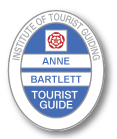Guided Walking Tours
Enjoy special guided walking tours around historic towns and villages in the Cotswolds, Gloucestershire, and Warwickshire region with Anne Bartlett, a registered Blue Badge Tour Guide. Guided walks and tours can be arranged for groups or individuals.
Here is a sample selection of towns and villages that we can explore. Let me reveal some of the mysteries, the scandals, the gossip, as well as the bizarre and the quirky stories that I have uncovered. With a backdrop of elegance and sophistication I will enlighten you with stories of Monarchs, Mistresses and Greasepaint in ……
Guided walks around Cheltenham:
Once known as the merriest sick resort on earth, Cheltenham today is a very elegant spa town which lies in the heart of the Cotswolds. It has wonderful Regency architecture and wide tree lined avenues. But during the late 18th and early 19th century the rich, the famous and the fashionable came as visitors to this popular health resort to take the waters, following in the steps of King George III and his family. Cheltenham’s fine Regency houses, elegant pump rooms, and pleasure gardens were built. Today we can explore this bygone age in and around the busy and vibrant town. But was it all polite society or was there more?
(see one of my blogs about Cheltenham) |
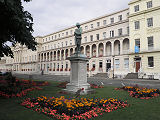 |
Guided Walks around Gloucester:
|
From its early days as a fortified Roman town called Glevum, situated on the banks of the River Severn, Gloucester has played a prominant role in English history ever since. It was from Gloucester in 1086 that William the Conqueror ordered a huge survey of his newly conquered country which was recorded in the Domesday Book. The glory of the city though, is its Cathedral with its impressive architecture and famous east window; but where do you put the body of a murdered king? Which King of England had his coronation in Gloucester? Lets look at the chapels, tombs, crypt and plaques to discover some amazing stories from Gloucester’s past. Delving into popular fiction, the famous Harry Potter caught the Hogwarts Express train from platform 9¾ at Kings Cross Station. He arrived at Hogwarts School for lessons in magic, witchcraft and wizardry and got into The Chamber of Secrets and also found the Philosopher’s stone. We will see if we can discover places where Harry, Ron and Hermione had their adventures. The impressive buildings around Gloucester’s fine cathedral include College Court and the Beatrix Potter Shop. Hear about a local story which inspired the writing of “The Tailor of Gloucester.” No visit to Gloucester is complete however, without a visit to its historic docks and a visit to The National Waterways museum.
(See one of my blogs about Gloucester) |
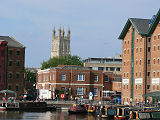
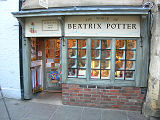
|
Guided walks around Tewkesbury:
| One of the finest medieval towns in England, Tewkesbury, with its glorious abbey church, its half timbered buildings and narrow alleys, sits at the confluence of the rivers Severn and Avon. But what terrible event occured on an area known as Bloody Meadow? Where is the Ancient Grudge? Let’s wander through the alleyways and alongside the river to discover more about this intriguing place. |
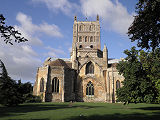 |
Guided Walks around Cirencester
| Considered to be the capital of the Cotswolds, Cirencester was in Roman times, the second largest town in Britain after London. The town’s Corinium Museum has one of the largest and most important collections of Roman objects in the country. During the Middle Ages Cirencester became a very important wool market for the Cotswolds but the cloth trade declined during the Industrial Revolution and since then the town has developed as an agricultural centre. The magnificent parish church of St John the Baptist was originally Norman but as a result of many additions during the 14th and 15th centuries by rich local merchants it is now regarded as one of the finest perpendicular churches in England. But who paid for the building of the church tower and why were their severed heads sent to a grateful King? |
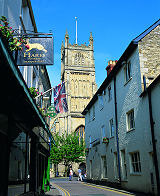 |
Guided Walks round Chipping Campden
| The name “Chipping” is an Old English word for market or trading place. From the 14th century Chipping Campden was a wool town where merchants bought fleeces to the 14th century Woolstaplers Hall for export mainly to Italy and Flanders for huge profits. The wealth of the town is reflected in its buildings, over a hundred are listed which means that they are of great historical and architectural importance. The church of St James is an imposing church, one of the finest “wool” churches in the Cotswolds with a fine west tower. It was built mainly in the 15th century. It contains many impressive tombs and monuments. Above the town is Dover’s Hill where on a clear day there are marvellous views over the Vale of Evesham. Hear about the “Cotswold Olimpicks” and the bizarre rural sport of shin kicking and learn about The Campden Wonder. |
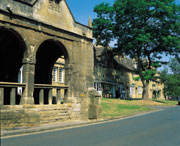 |
The Cotswolds
|
Is an Area of Outstanding Natural Beauty, It is a range of hills in west-central England, sometimes called the “Heart of England”, an area which is 25 miles (40km) across and 90 miles (145km) long. It is excellent walking country criss-crossed by many ancient footpaths.
|
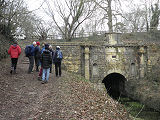 |
The Cotswold Way walk:
| Is now a National Trail just over 100 miles in length. It lies between the Cotswold town of Chipping Campden and the Georgian town of Bath. Along its pathway are some amazing views, beautiful countryside and attractive towns and villages. |
|
Guided Walks around Bath
| Bath’s well preserved Roman remains and its abundance of Georgian architecture make it an impressive and important World Heritage Site. Bath is an internationally famous spa town which is easy to explore with its compact and traffic free centre. As well as its wealth of history and places of interest Bath has market stalls, street musicians and entertainers, museums, outdoor cafes and enticing shops. |
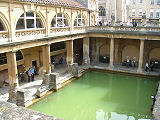 |
Guided Walks around Stratford-Upon-Avon
| Is one of the most historic and busy tourist towns in the country. William Shakespeare was born here on 23rd April 1564. He bought New Place for his retirement, after spending much of his working life in London, and died here on 23rd April 1616. He was buried age 52 in the chancel of Holy Trinity Church on the banks of the River Avon. In 1769 David Garrick organised the first Shakespeare festival and this started a literary pilgrimage to the town. There are a number of buildings connected with William Shakespeare and his family that you can visit, such as Shakespeare’s Birthplace, Anne Hathaway’s Cottage, Mary Arden’s House, Hall’s Croft and Nash’s House alongside the remains of New Place which was demolished. Let me tell you the amazing story as to why it was pulled down. |
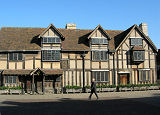 |
|

